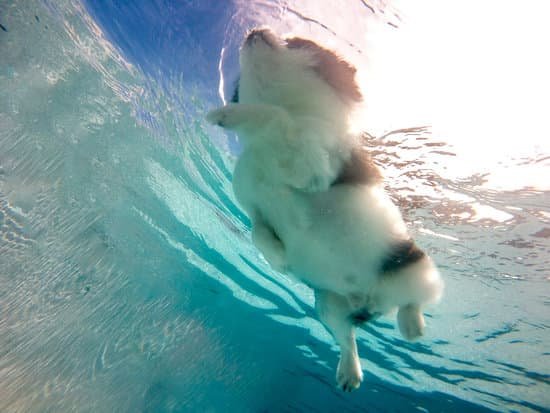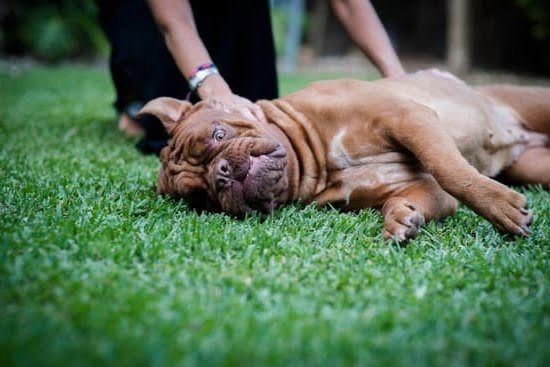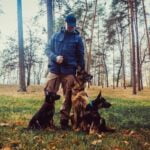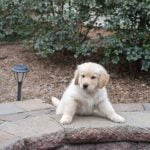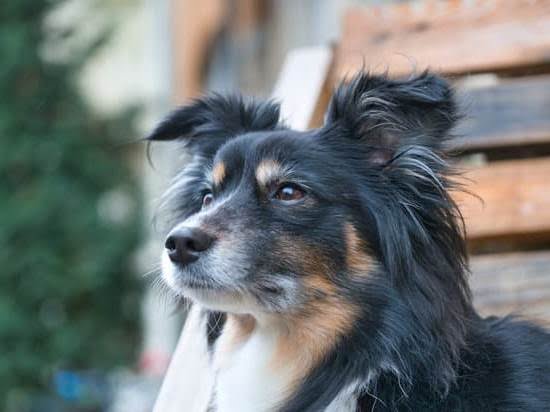How do you start a dog scent training? Scent training is a valuable skill that can benefit both dogs and their owners in various ways. From search and rescue missions to recreational tracking, this specialized training taps into a dog’s powerful sense of smell and innate hunting instincts. In this article, we will explore the world of dog scent training, from understanding a dog’s sense of smell to implementing advanced techniques and troubleshooting common issues.
Dog scent training is more than just a fun activity for dogs – it also provides mental stimulation, physical exercise, and strengthens the bond between canine and human. By tapping into their natural abilities, dogs can gain confidence and fulfillment through these activities. Throughout this article, we will provide guidance on how to get started with dog scent training and discuss the benefits of incorporating this type of training into your dog’s routine.
In the following sections, we will delve into how to prepare for scent training, understand a dog’s powerful sense of smell, choose the right scent for training, and implement basic and advanced scent training exercises. Additionally, we will address common issues that may arise during scent training and offer tips for troubleshooting.
Whether you are looking to engage in practical activities such as search and rescue or simply want to enhance your relationship with your furry companion, this article will provide valuable insights into the world of dog scent training.
Getting Started With Dog Scent Training
Preparing for Scent Training
Before diving into dog scent training, it’s important for owners to prepare themselves and their furry companions for the journey ahead. This includes understanding the basic principles of scent training, such as using positive reinforcement and creating a safe and encouraging environment for the dog. Owners should familiarize themselves with different scent training techniques and be prepared to invest time and patience into the process.
Choosing the Right Equipment and Supplies
Selecting the appropriate equipment and supplies is crucial for successful dog scent training. This may include a well-fitted harness for tracking exercises, high-quality treats or toys as rewards, and specific scents or odor kits designed for training purposes. It’s essential for owners to research and invest in reliable products that will aid in effectively communicating with their dogs during scent training.
Establishing a Training Schedule
Consistency is key when it comes to dog scent training. Establishing a regular training schedule helps dogs understand what is expected of them and allows them to make progress in their scent recognition abilities. Whether it’s setting aside time each day for short training sessions or attending weekly classes with a professional trainer, sticking to a consistent routine will greatly benefit both the owner and their canine companion.
Understanding a Dog’s Sense of Smell
Dogs have an incredibly powerful sense of smell, much stronger and more sensitive than that of humans. In fact, a dog’s sense of smell is estimated to be anywhere from 10,000 to 100,000 times more acute than that of humans.
This ability to detect scents makes them invaluable for tasks such as search and rescue, detection work, and hunting. The olfactory receptors in a dog’s nose play a crucial role in their ability to discern and track different scents.
To put this into perspective, while humans have approximately 5-6 million scent receptors in their noses, dogs have up to 300 million. The part of a dog’s brain that is dedicated to analyzing smells is also proportionally much larger than that of a human’s. This allows them to not only detect scents at incredibly low concentrations but also differentiate between different odors with great accuracy.
When it comes to training your dog for scent work, understanding and appreciating the capabilities of their sense of smell is key. Given their extraordinary olfactory abilities, dogs are well-equipped for scent training tasks such as tracking specific scents or identifying hidden objects based on odor alone.
It is important for dog owners and trainers to recognize that the way dogs experience the world through scent differs significantly from how humans perceive it through vision or hearing. This understanding will guide the training process and help set realistic expectations for what can be achieved through scent training exercises.
Choosing the Right Scent for Training
When it comes to dog scent training, choosing the right scent is crucial for success. The first step in this process is to consider what purpose the training will serve. For example, if the goal is to train a dog for search and rescue missions, scents like human sweat or specific essential oils can be used. On the other hand, if the objective is hunting or tracking game, scents from animals like deer or birds can be employed.
It’s important to introduce the chosen scent gradually and with positive reinforcement. This involves allowing the dog to sniff and become familiar with the scent in a controlled environment. This can be done by placing the chosen scent on an item such as a toy or piece of cloth and encouraging the dog to interact with it.
Finally, patience is key when it comes to familiarizing a dog with a specific scent. Each dog will react differently and at their own pace, so consistency in training methods and cues is essential. In addition to patience, be sure to make the training experience positive by using treats and praise to reward the dog for interacting with the chosen scent.
| Choosing Scent Type | Training Purpose |
|---|---|
| Human Sweat | Search and Rescue |
| Deer or Bird Scent | Hunting/Tracking Game |
Basic Scent Training Exercises
Training your dog to recognize and track specific scents can be a fun and rewarding experience for both you and your pet. The first step in basic scent training is to choose a scent that you want your dog to locate. Common scents used for training include essential oils, such as lavender or birch, but it’s important to choose a scent that your dog responds well to.
Once you have chosen the scent, the next step is to introduce it to your dog in a positive and controlled environment. You can do this by placing a few drops of the scent on a cotton pad or cloth, and allowing your dog to sniff it while offering treats and praise. This will help them form a positive association with the scent.
After introducing the chosen scent, you can begin basic training exercises such as “scent boxes” or “scent trails”. For “scent boxes”, you can place multiple containers (such as small cardboard boxes) in an area, with only one containing the scented cotton pad.
Encourage your dog to search for the box with the scent, and reward them when they successfully identify it. Similarly, for “scent trails”, you can create a trail with the scented cotton pad, leading your dog to its location.
By starting with these basic exercises, you can build a strong foundation for more advanced scent training techniques. It’s important to keep training sessions short and enjoyable for your dog, using positive reinforcement methods throughout each exercise.
| Training Exercise | Description |
|---|---|
| Scent Boxes | Place containers in an area with only one containing the scented cotton pad. |
| Scent Trails | Create a trail with the scented cotton pad leading your dog to its location. |
Advanced Scent Training Techniques
Once your dog has mastered the basic scent training exercises, you can start implementing more advanced techniques to further enhance their olfactory abilities. Here are some tips for taking your dog’s scent training to the next level:
- Progressing from basic scent training to complex searches and tasks
- Implementing distractions and challenges, such as outdoor environments or crowded spaces
- Introducing multiple scents for your dog to differentiate and track simultaneously
- Expanding the range and difficulty of search areas to test your dog’s scent detection skills
By introducing these advanced techniques, you can continue to stimulate and challenge your dog’s sense of smell, providing mental enrichment and fulfillment.
Remember that patience and consistency are essential when practicing advanced scent training with your dog. It’s important to gradually introduce new challenges and always provide positive reinforcement for their efforts. With dedication and perseverance, you can help your dog reach their full potential in scent detection and tracking.
Troubleshooting Common Issues in Scent Training
Addressing Lack of Interest or Progress
One common issue that dog owners may encounter when engaging in scent training with their dogs is a lack of interest or apparent progress in the training. This can be frustrating for both the owner and the dog, but it’s important to remain patient and persistent. One approach to address this issue is to reassess the chosen scent for training.
Some scents may be more motivating for certain dogs, so it could be beneficial to experiment with different options to see which one resonates best with your canine companion. Additionally, introducing higher value rewards during training sessions can help increase motivation and engagement.
Adjusting Training Methods for Different Breeds and Personalities
Not all dogs are the same, and what works for one breed or individual dog may not work for another. It’s crucial to understand that different breeds have different strengths and weaknesses when it comes to scent work. For example, hound breeds are known for their exceptional scenting abilities, while other breeds may require a different approach to training.
Similarly, some dogs may have a more independent personality, while others are highly motivated by human interaction. Taking these factors into consideration will allow you to tailor your training methods to better suit your dog’s specific needs and tendencies.
Seeking Professional Guidance
If you’re experiencing significant challenges or roadblocks in your dog’s scent training journey, don’t hesitate to seek professional guidance. There are experienced trainers and behaviorists who specialize in scent work and can provide valuable insight and techniques to help overcome common issues.
They can offer personalized advice based on your dog’s unique circumstances and can also assess whether there are any underlying issues that need to be addressed before proceeding with the training. Professional assistance can make a significant difference in ensuring a successful scent training experience for both you and your dog.
Incorporating Scent Training Into Daily Life
Once you have gotten the hang of basic scent training exercises, it’s time to take your dog’s training to the next level by incorporating it into their daily life. One way to do this is by using scent training for practical purposes, such as search and rescue or hunting. Many working dogs use their keen sense of smell in these tasks, and it can be both mentally stimulating and physically engaging for your furry friend.
Not only does incorporating scent training into daily life serve a practical purpose, but it can also enhance the bond between you and your dog. By working together on scent-related tasks, you are strengthening the communication between you and your pet. This shared experience can deepen your mutual trust and understanding, creating a stronger partnership.
In addition to more specialized tasks like search and rescue or hunting, there are simple ways to incorporate scent training into everyday activities with your dog. For example, hiding treats around the house or in the yard for them to find can be an enjoyable game that keeps them mentally sharp and physically active. This not only adds some fun to your dog’s day, but also reinforces their scent tracking skills in a low-pressure setting.
Conclusion
In conclusion, dog scent training is a valuable and rewarding activity for both dogs and their owners. Not only does it tap into the natural instincts and abilities of dogs, but it also strengthens the bond between a pet and its owner. By understanding a dog’s powerful sense of smell and choosing the right scents for training, individuals can embark on a journey to teach their furry companions how to recognize and track specific scents.
It is important to remember that patience and consistency are key when it comes to dog scent training. Each dog learns at its own pace, so it’s essential to be persistent and provide positive reinforcement throughout the training process. Additionally, incorporating scent training into daily life can have practical applications, such as search and rescue or hunting activities. This not only enhances the dog’s skills but also allows them to contribute in meaningful ways.
Overall, whether for practical purposes or simply as a fun mental exercise for dogs, scent training offers numerous benefits. It is an exciting way to engage a dog’s mind and tap into their natural abilities while strengthening the relationship between owner and pet. Therefore, we encourage all readers to consider starting their own scent training journey with their dogs and experience the many rewards it has to offer.
Frequently Asked Questions
What Age Can Dogs Start Scent Training?
Dogs can start scent training at any age, but it’s best to begin when they are young and their sense of smell is at its peak. Puppies as young as eight weeks old can start learning the basics of scent work, which will set a strong foundation for more complex training as they mature.
What Are 4 Scents for Smell Training Dogs?
There are several scents commonly used for smell training dogs, including birch, anise, clove, and cypress. These scents are often used in various combinations to create unique scent profiles for the dogs to identify during training exercises. By exposing dogs to these scents in a controlled environment, they can learn to recognize and locate them with increasing accuracy.
What Scent Should I Train My Dog to Find?
The scent you should train your dog to find depends on your specific goals and needs. Common scents include those used in search and rescue operations (like human scent), narcotics detection (such as marijuana or cocaine), or even truffle hunting (where dogs are trained to locate the elusive fungus).
The choice of scent will depend on the type of work you want your dog to do, as well as their individual strengths and abilities.

Welcome to the blog! I am a professional dog trainer and have been working with dogs for many years. In this blog, I will be discussing various topics related to dog training, including tips, tricks, and advice. I hope you find this information helpful and informative. Thanks for reading!

